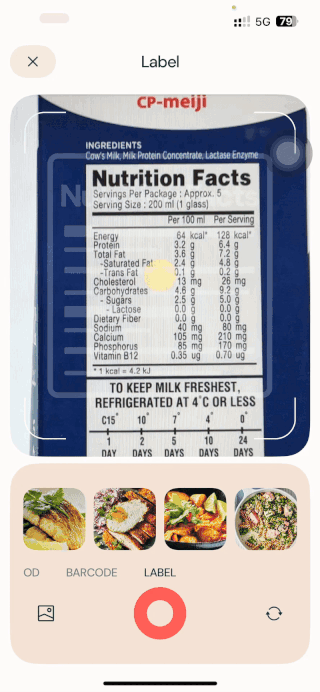How to Read Nutrition Labels Like a Pro – Avoid Hidden Calories and Make Healthier Choices
Checking Labels
Ever flipped over a box of your favorite cookies and checked the label?
(Probably not if you were hungry, right? 😅)
It looks something like this. How many calories are the cookies?
It says: Calories 160
Not bad for a quick snack, right?
Not so fast... read between the lines.
Here’s where most of us get tripped up — those 160 calories are for a single serving.
(It also says that 70 of those 160 calories come from fat, making this product almost 50% fat!)
Now check the top of that label again.
👀 See where it says “Serving Size” and “Servings Per Container”?
Turns out that “small” box might actually have 8 servings — which means if you finish the whole thing (and who hasn’t?), you just ate 1,280 calories.
😳 Yikes.
Next time you go grocery shopping, make sure to check the small letters on the nutrition label to understand how much you’re actually eating.
Calories per serving or per 100grams
Nutrition labels vary globally, some communicate per whole pack, some per serving and some per 100 grams. You’ve probably seen other formats like these:
Labels that show Per 100g are typically more common in European and some Asian countries.
This format makes it easier for you to compare nutrient density across different foods, by looking at per 100 grams, regardless of what the food manufacturer considers 1 serving size.
📊 Beyond Calories — What Else is on That Label?
Once you get past the calories, you’ll see a bunch of other numbers, like:
🥩 Protein
🍞 Carbs
🌾 Fiber
💊 Vitamins and minerals
Daily Value %
These numbers are measured in grams (g) or milligrams (mg) and often come with a % Daily Value (%DV) — a quick way to see how much that serving contributes to a typical 2,000 calorie/day diet.
For example: If a snack has 25% DV of sodium, that means it takes up a quarter of your daily sodium limit — maybe not ideal if you’re trying to cut back.
So, what exactly is %DV?
Who sets it? The FDA (U.S. Food and Drug Administration) sets these values based on the average nutritional needs of an adult eating 2,000 calories a day. Many Asian countries adopt similar %DV guidelines.
Why is it important? It helps you quickly understand if a food is high or low in a particular nutrient.
General Rule of Thumb for %DV:
5% or less is low — good for things you want to limit (like sodium or added sugar).
20% or more is high — great for nutrients you want more of (like fiber, protein, and vitamins).
💯 Nutrients to Prioritize
Want to know what to eat more of? Look for these on the label:
✅ Protein
Why: Helps keep you full and supports muscle maintenance.
What to do: Pick higher-protein options when choosing between similar foods. A good high protein food would be for every 100 calories there is 10g of protein in it.
✅ Fiber
Why: Often stripped out of processed foods, but key for gut health, digestion and keeping you full.
What to do: Choose less processed options or those with a higher %DV of fiber.
✅ Vitamins & Minerals
Why: Important for various bodily functions, but also stripped out during processing.
What to do: Go for options that are less processed or fortified with more vitamins and minerals.
Nutrients to Moderate
Pay attention to these and consume in moderation.
⚠️ Sugar (especially added)
Why: Linked to chronic issues like diabetes and can give you “sugar-crashes” when eating large amounts, making you feel fatigued and hungry.
What to do: Watch out for products that say “low-fat” or “fat-free” options. They could have lots of “sneaky sugars” in them.
⚠️ Fats (especially trans and saturated fats)
Why: Higher in calories and linked to heart problems.
What to do: Choose unsaturated fats (like avocado, nuts, and olive oil) instead.
⚠️ Sodium (or salt) 🧂
Why: High intake is linked to high blood pressure and other health issues.
What to do: Be careful — sodium is often hidden in packaged foods to increase shelf life.
📸 Send Nutrition Labels to Welling
Did you know you can send nutrition labels to Welling? You can use it to log a food that you ate or to ask a question if you’re unsure if the food suits your goals.
Open the Camera > Swipe to Label:
To recap:
Nutrition labels reveal what’s really in your food—not just the calories, but also sugars, fats, and nutrients that impact your health.
Understanding them helps you make smarter choices to fuel your body, manage weight, and reduce disease risk. Without this knowledge, it’s easy to overconsume hidden calories or unhealthy ingredients that can sabotage your goals.












